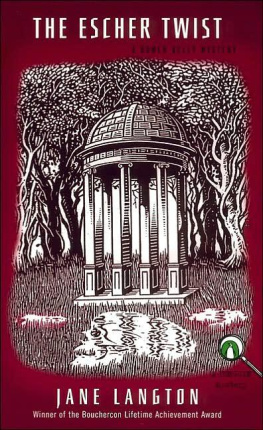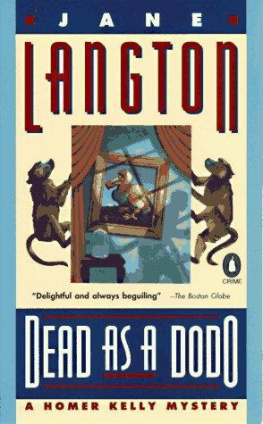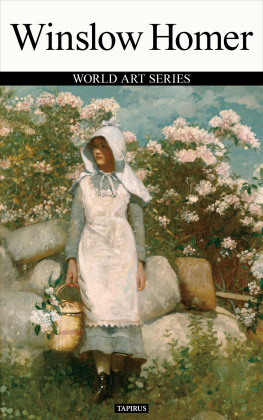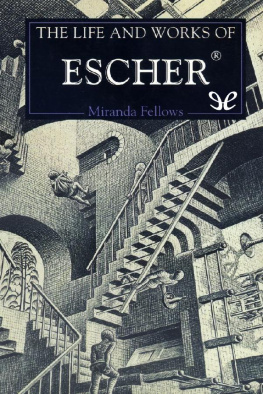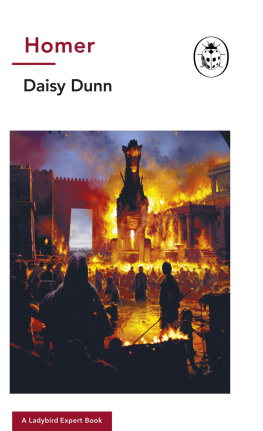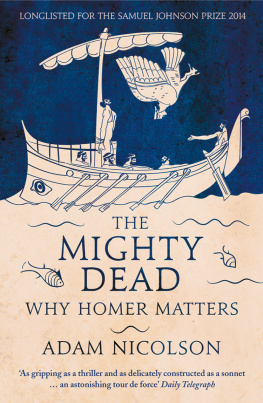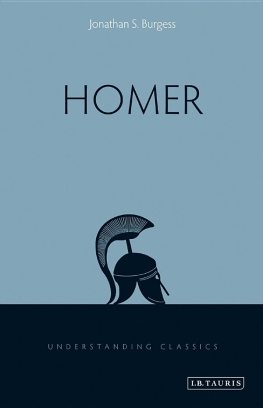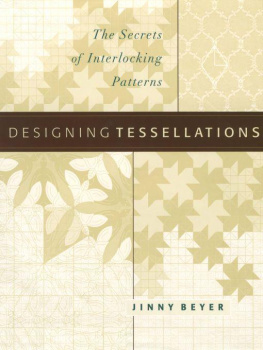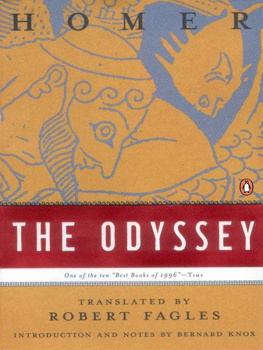
"One who watches us all" M. C. Escher
The Escher Twist
A Homer Kelly Mystery
by Jane Langton
Copyright 2002; ISBN 014 20.0184 8
For fellow enthusiasts Andy, David and Chris

Double Planetoid
Two regular tetrahedrons, piercing each other, float through space as a planetoid. The light-colored one is inhabited by human beings who have completely transformed their region into a complex of houses, bridges and roads. The darker tetrahedron has remained in its natural state, with rocks, on which plants and prehistoric animals live. The two bodies fit together to make a whole, but they have no knowledge of each other. M. C. Escher
They have no knowledge of each other.
Perhaps the city of Cambridge, interpenetrated by the garden cemetery of Mount Auburn, is a double planetoid. The two parts fit together to make a whole, but the city of the living repudiates the city of the dead. As soon as breathing stops and their bodies are cold, the dead are spirited away. Only later do they turn up among the green hills of Mount Auburn as chunks of granite, stiff and upright, their speech reduced to chiseled words on their stony faces. "Hello," they say on Tuesday, "my name is Chester Smith," and on Wednesday and Thursday and forever after, only "Chester Smith."
The Escher Twist
Cambridge, Massachusetts
a fantastical statistical study
In recent years the center of Old Cambridge has become one of the liveliest, noisiest, and most crowded areas in the Boston Metropolitan District, with a proliferation of restaurants, bars, shops and boutiques, thronged with students from Harvard and thousands of other young people attracted to the street scene and the night life, along with hordes of tourists.
Blue Guide to Boston and Cambridge
A few current residents of Cambridge
- Leonard Sheldrake, crystallographer, attic apartment, 24 Sibley Road. Leonard is thirty-nine.
- Eloise Winthrop, Leonards widowed landlady, 24 Sibley Road. Eloise is eighty-one.
- Maud Starr, proprietor of Twice-Told Togs, Huron Avenue
- Leonard Underdown, professor of geology, Massachusetts Institute of Technology
- Barbara Strong, resident, Aberdeen Street Nursing Home
- Edward Fell, resident, Aberdeen Street Nursing Home
- B. J. Larkin, landlord, 87 Sibley Road
And of course there are multitudes of others. Like most cities, Cambridge is not one metropolis but many. Its hundred-thousand multiracial inhabitants occupy every sort of dwelling, from the elegant habitations of Brattle Street and the Georgian dormitories of Harvard University to the three-deckers and comfortable Victorians of far-flung neighborhoods east, west, north and south of Harvard Square.
Six-and-a-half square miles of urban density are relieved by parks and playing fields and by a famous cemetery
Mount Auburn Cemetery was established in 1831 by Dr. Jacob Bigelow, whose intent was to create the first garden cemetery in the U.S.... Atop the highest hill ... is a tower... Blue Guide to Boston and Cambridge
Therefore, in taking a proper census, what about underground residents? Shouldn't they be included in the total population by some sort of mortuary statistic? After all, there are ninety thousand expired citizens in Mount Auburn alone, including
- Professor Zachariah Winthrop, Mrs. Winthrop's deceased husband, Willow Avenue
- Isabella Stewart Gardner, Auburn Lake
- Mary Baker Eddy, Halcyon Avenue
- Harold Edgerton, Story Road
- Buckminster Fuller, Bellwort Path
- Henry Wadsworth Longfellow, Indian Ridge
- Nathaniel Bowditch, Tulip Path
- Benjamin Bates, Founder of Cheap Postage , Pyrola Path
- Margaret Fuller Ossoli, Pyrola Path, a memorial stone
And then perhaps, by some sort of ectoplasmic reckoning, an all-inclusive census might take into account the ten billion particles of floating brain tissue sloughed off by students passing through Harvard Squarebits and pieces of spectral substance thickening the air, breathed in by all.

Bond of Union
The printmaker has something of the minstrel spirit; he sings, and in every print ... he repeats his song over and over again.... The graphic artist ... is like a blackbird singing at the top of a tree ... He wishes that the wind would scatter his leaves over the earth ... not like the dry leaves of autumn, but rather like seeds ready to germinate and light as a feather. M. C. Escher
*1*
On display in the Cambridge Gallery on Huron Avenue, prints by Dutch artist M. C. Escher. Hours 106 weekdays, 109 Saturday, 16 Sunday. Till July 1.
The Boston Phoenix
Love at first sight is folly. Usually the demented people come to their senses, but sometimes only when it's too late. Frieda's and Leonard's case was typically instantaneous and ridiculous. Strangers, they met at an exhibition of the work of the Dutch printmaker M. C. Escher.
The Cambridge Gallery on Huron Avenue was not far from Leonard's attic apartment on Sibley Road.
There were a lot of other people in the gallery. They kept flooding in the door, coming in from the rain, picking up the free pamphlet and walking slowly through the rooms, moving alone or in clusters, parting and rejoining.
Frieda and Leonard drifted together before a famous wood engraving called A Dream . In a Gothic arcade a stone bishop lay on a sarcophagus with an enormous insect crouched upon his breast.
Leonard spoke up first, "It's more like a nightmare than a dream."
"Oh, yes," said Frieda quickly. She laughed. "And such a joke."
"Because the bug is praying. It's a praying mantis."
"Praying to the bishop."
"So much for organized religion."
They wandered together through the rest of the exhibition of Escher's prints. Leonard was familiar with all of them, in fact they were part of his life. But instead of lecturing to Frieda he said outrageous things and made her laugh.
She was puzzled by the woodcut called Moebius Strip , a latticed figure-eight inhabited by ants. "I just don't understand it. I mean, I've heard of Moebius strips, but I don't see what's so special about them."
"Look." Leonard took the gallery pamphlet, creased it sharply and tore off one edge. "You make a twist like this, then stick the ends together to make a loop. See?"
He held the strip together with finger and thumb, then made a magical gesture with the other hand. "Presto, behold the impossible. Before the twist there were two sides. Nowhere, try it. Run your finger all the way around."
"Oh," said Frieda, "it goes inside and outside."
"So there's only one surface now, not two."
She laughed. "It's bewitched."
There were only forty prints in the exhibition, but they took their time. Stopping before the last one, Leonard looked at Frieda and introduced himself. "Leonard. I'm a geologist. Well, actually I'm a crystallographer."
At once her cheerfulness faded, and she glanced away. "My name's Frieda. I'm an artist."
Words welled up in Leonard, questions that would have been intrusive if they weren't suddenly so important. Where do you live? How could there be someone like you? "Are you a printmaker like Escher?"
"No, no." She looked across the room as if searching for someone. She seemed embarrassed. "I make drawings. Faces, portraits of people."
Next page
